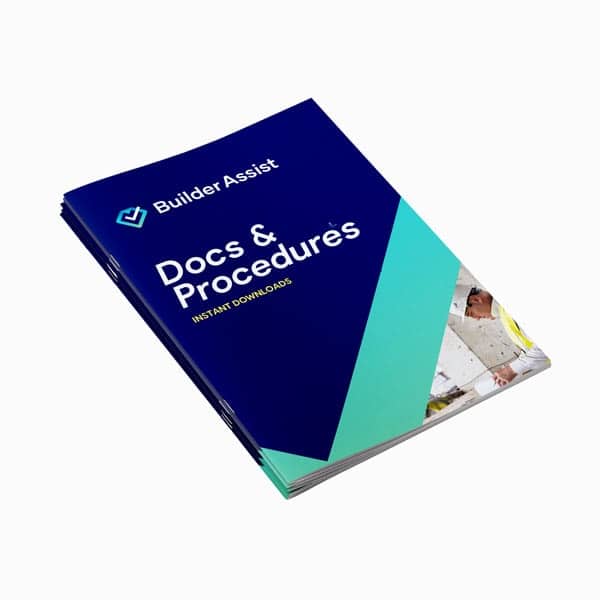
In building and construction, Occupational Health and Safety (OH and S or OH&S) is not just a requirement; it's a crucial aspect of ensuring a safe and productive workplace.
In this comprehensive guide, we delve into the essentials of OH and S (OH&S), shed light on the differences between OH&S and WHS (Work Health and Safety), and provide builders and tradespeople with the tools they need to create a secure work environment.
But first, we'll look at the difference between OH and S (OH&S) and WHS.
OH and S vs. WHS: Decoding the Terms
Before we dive into the specifics of Occupational Health and Safety, let's clarify the terminology. While OH&S and WHS are often used interchangeably, they do have nuanced differences. OH&S typically refers to Occupational Health and Safety, a term widely used in various industries. On the other hand, WHS specifically stands for Work Health and Safety, the recent term that has gained prominence in Australia to encompass a broader scope, including the health and safety of workers and others affected by the work.
"Occupational Health and Safety" (OH&S) transitioned to "Work Health and Safety" (WHS) with the introduction of the model Work Health and Safety Act in 2011. The change aimed to provide a more contemporary and inclusive approach to workplace health and safety.
Understanding this distinction is pivotal for builders and tradespeople, because compliance with WHS regulations is essential to create a secure work environment.
The Fundamentals of OH&S (now WHS) for Builders and Tradespeople:
Work Health and Safety (WHS) in Australia is governed by a national framework that includes the model Work Health and Safety Act (WHS Act) and associated regulations. Below are the fundamental principles and requirements for WHS applicable to builders and tradespeople:
WHS Legislation:
Builders and tradespeople in Australia need to comply with the model WHS Act, which is designed to ensure the health and safety of workers and others affected by the work. This legislation is implemented at the state and territory level, with each jurisdiction adopting its own version of the model WHS Act.
Duty of Care:
Employers, including builders and tradespeople, have a duty of care to ensure the health and safety of their workers and others at the workplace. This includes providing and maintaining a safe work environment, safe systems of work, and adequate training and supervision.
Risk Management:
Risk management is a fundamental aspect of WHS. Builders and tradespeople are required to identify, assess, and control workplace risks. This involves conducting risk assessments, implementing control measures, and regularly reviewing and updating risk management processes.
Safe Work Method Statements (SWMS):
Builders and tradespeople must prepare Safe Work Method Statements for high-risk construction work. SWMS outline the work activities, associated hazards, and the control measures in place to mitigate those hazards. It is a legal requirement for certain high-risk activities.
Consultation and Communication:
Effective consultation and communication with workers and other relevant parties are essential for WHS compliance. Builders and tradespeople should engage workers in discussions about health and safety matters, involve them in decision-making processes, and provide information on potential risks.
Training and Induction:
Providing adequate training and induction for workers is crucial. Builders and tradespeople need to ensure that workers are trained in the safe performance of their duties and are aware of emergency procedures, hazard identification, and control measures.
Personal Protective Equipment (PPE):
Where required, builders and tradespeople must provide and maintain appropriate Personal Protective Equipment (PPE) for their workers. This may include items such as helmets, gloves, eye protection, and high-visibility clothing.
Incident Reporting and Investigation:
In the event of a workplace incident, builders and tradespeople are obligated to report certain incidents to the relevant authorities. Additionally, a thorough investigation must be conducted to determine the root cause and prevent future occurrences.
Importantly, builders and tradespeople should remain vigilant about potential updates or changes in Work Health and Safety (WHS) requirements, which can vary across States and Territories. Regular checks with the respective WHS regulatory authorities are crucial to stay well-informed about any amendments to legislation or regulations.
Fortunately, Builder Assist keeps abreast of WHS requirement changes in each State and Territory. This commitment ensures that any resources we provide, be it Safety Management Plans or other documentation, are consistently up-to-date. By relying on Builder Assist, professionals in the construction industry can trust that the tools and guidance offered align seamlessly with the latest WHS requirements.
The Importance of OH&S (WHS) in Construction:
OH & S, or Work Health and Safety (WHS), in Australia is of paramount importance for builders and tradespeople, and there are several key reasons why prioritising WHS is crucial in the industry:
Compliance:
Compliance with WHS regulations is required in Australia. Builders and tradespeople must adhere to the model Work Health and Safety Act and associated regulations. Failure to comply can result in consequences, including fines and penalties.
Worker Safety:
The primary focus of WHS is to ensure the health and safety of workers. Builders and tradespeople are responsible for providing a safe work environment, implementing safe work practices, and minimising risks to protect the physical and mental well-being of employees.
Reduced Incidents and Injuries:
Prioritising WHS helps to identify and control workplace hazards, reducing the likelihood of accidents and injuries. This not only protects workers, but also contributes to the overall efficiency and productivity of construction projects.
Enhanced Reputation:
A commitment to WHS reflects positively on the reputation of builders and tradespeople. Clients and stakeholders increasingly value contractors who prioritise safety, viewing them as responsible and trustworthy partners in construction projects.
Cost Savings:
Implementing effective WHS measures can result in cost savings for builders and tradespeople. By preventing accidents and injuries, businesses can avoid medical expenses, workers' compensation claims, and potential legal costs associated with workplace incidents.
Improved Productivity:
A safe and healthy work environment contributes to higher levels of productivity. Workers are more likely to focus on their tasks and perform efficiently when they feel secure and supported in terms of their health and safety.
Insurance Considerations:
Some insurance policies may be contingent on adherence to WHS standards. Non-compliance could impact insurance coverage, leading to potential financial losses in the event of a claim.
In summary, Work Health and Safety is integral to the construction industry in Australia. Prioritising WHS contributes to a positive workplace environment, protects workers, enhances business reputation, and ultimately supports the long-term success of builders and tradespeople in a highly competitive and regulated industry.
Resources for OH&S (WHS) in Construction:
There is a wealth of resources to assist builders and tradespeople with Work Health and Safety (WHS) in Australia. Builder Assist provide industry-leading, compliant documentation templates that help guide you through WHS requirements:
Safety Management Plans:
At Builder Assist, builders and tradespeople can access a comprehensive Safety Management Plan (SMP) designed to elevate workplace safety standards. This resource serves as a foundational document, guiding professionals through the establishment and maintenance of a robust safety framework. The SMP includes essential components such as risk assessments, emergency response procedures, and safety communication strategies. With customisable templates and industry-specific guidance, builders and tradespeople can tailor the plan to their projects, ensuring adherence to the latest Work Health and Safety regulations. By utilising this resource, professionals can not only enhance workplace safety but also streamline compliance processes, which fosters safety responsibility and well-being in the construction industry.
Safe Work Method Statements (SWMS):
SWMS are crucial documents that outline the high-risk construction work, associated hazards, and the control measures to be implemented. These are project-specific and help ensure that workers understand the risks involved in their tasks. Check Builder Assist’s SWMS templates relevant to your trade.
Risk Assessment Forms:
Risk assessments are fundamental to identify and manage workplace risks. Builders and tradespeople can use templates or forms to systematically assess risks associated with specific tasks or areas of their construction projects. Take a look at Builder Assist’s customizable risk assessment templates.
Induction documentation:
Inductions are vital to introduce new workers to the workplace and its safety protocols. Induction documentation helps ensure that new hires receive the necessary information about safety procedures, emergency exits, and other critical aspects of the work environment.
Some crucial induction documentation includes:
- Site Induction Procedure
- Site Induction Register
- Site Induction Record - General
- Site Induction Record - Visitors
- New Employee Induction
PPE Policies and Checklists:
Personal Protective Equipment (PPE) is crucial in many construction activities. Builders and tradespeople should have clear PPE policies outlining the type of equipment required for specific tasks. Checklists can help ensure that workers have the necessary PPE before starting work. All Builder Assist trade-specific Safety Management Plans include Personal Protective Equipment (PPE) policies and procedures.
In addition, it’s important to have a Personal Protective Equipment (PPE) Record in place to record personnel receipt of PPE clothing and equipment.
Emergency Response Plans:
Having a well-documented Emergency Response Plan is essential. This plan should detail the procedures to be followed in case of emergencies, including evacuation routes, emergency contacts, and first aid protocols.
Equipment Inspection Checklists:
Regular inspection of tools and equipment is vital for preventing accidents. Equipment inspection checklists ensure that all tools are in proper working condition, to reduce the risk of malfunctions during use.
All Builder Assist trade-specific Safety Management Plans include:
- Plant and Equipment Policy,
- Plant and Equipment Register,
- Plant and Equipment Pre-start Checklist, and
- Plant and Equipment Regular Checklist.
Importantly, all the safety documents mentioned above are conveniently included in Builder Assist Safety Management Plans. These templates are tailored to your specific trade and developed by industry-leading professionals.
These safety documentation resources from Builder Assist ensure that your OH&S/WHS practices are well-documented and aligned with industry best practices. Regularly reviewing and updating these documents will help your construction team maintain a safe and compliant work environment.
It’s important to note that Builder Assist documentation is tailored to your state or Territory, are up-to-date with the latest WHS requirements and customisable for your specific projects and workforce.
In construction, prioritising Occupational Health and Safety is not just a necessity—it's a commitment to the well-being of your team and the success of your projects. By understanding the nuances between OH&S and WHS, implementing fundamental safety measures, and accessing relevant resources, builders and tradespeople can create a workplace that is not only compliant but thriving in its dedication to safety. Remember, a safe construction site is a productive one.

Safety Management Plans (WHS)
Specifically designed for each trade starting up a business, these Work Health Safety Management Plans or WHS Management Plans, provide support with the management of Work Health & Safety in the workplace. Also referred to as Occupational Health & Safety (OH&S) the material provided in this section will assist with WHS/OHS management and training requirements for the workplace.



